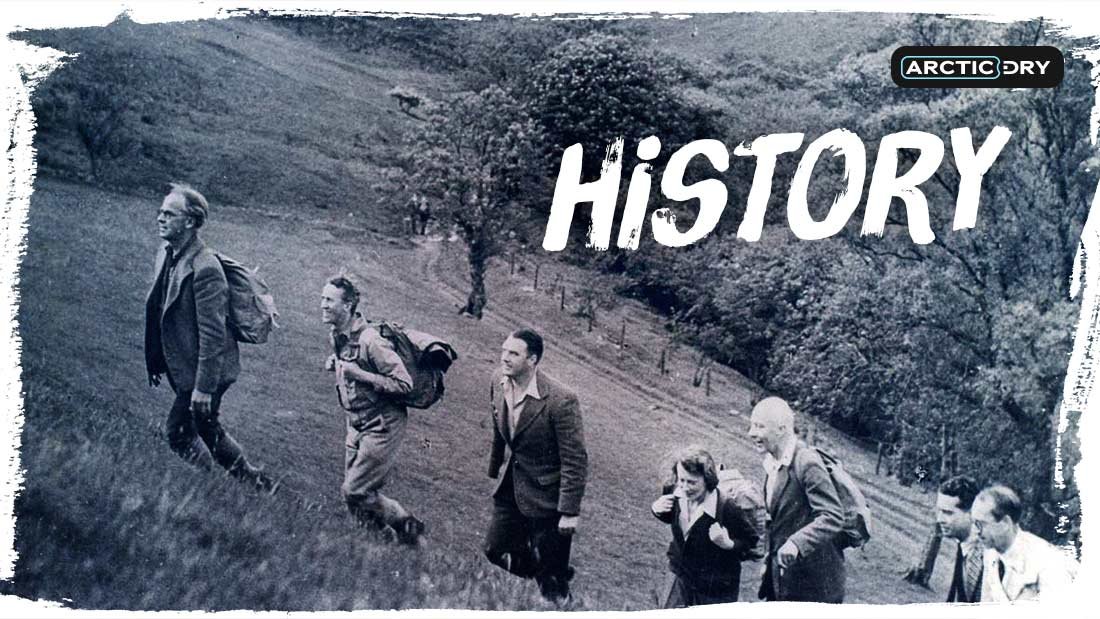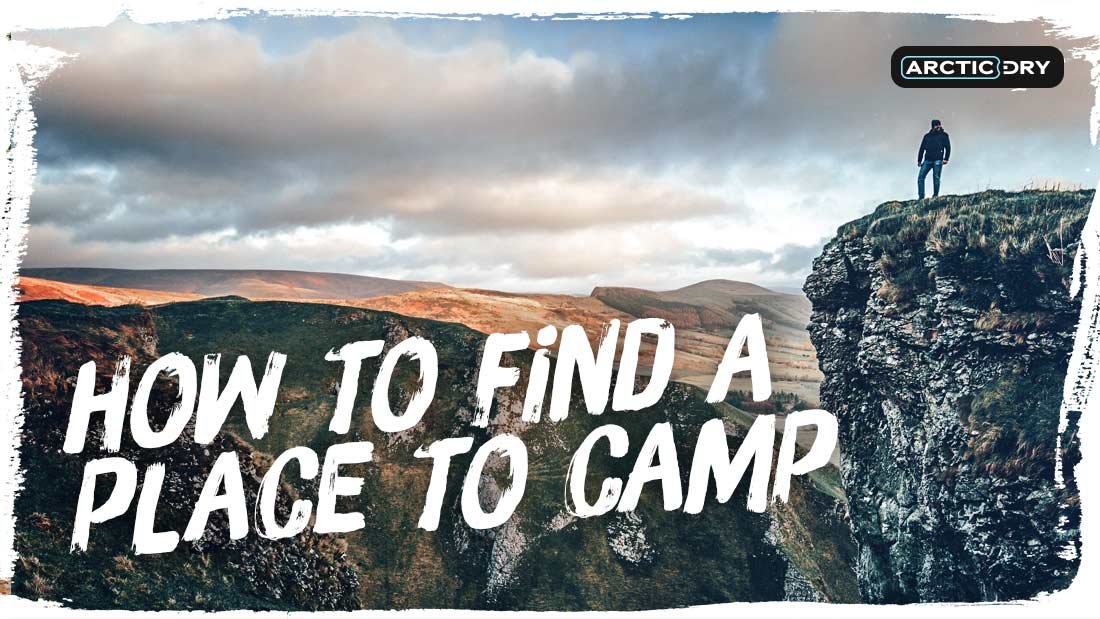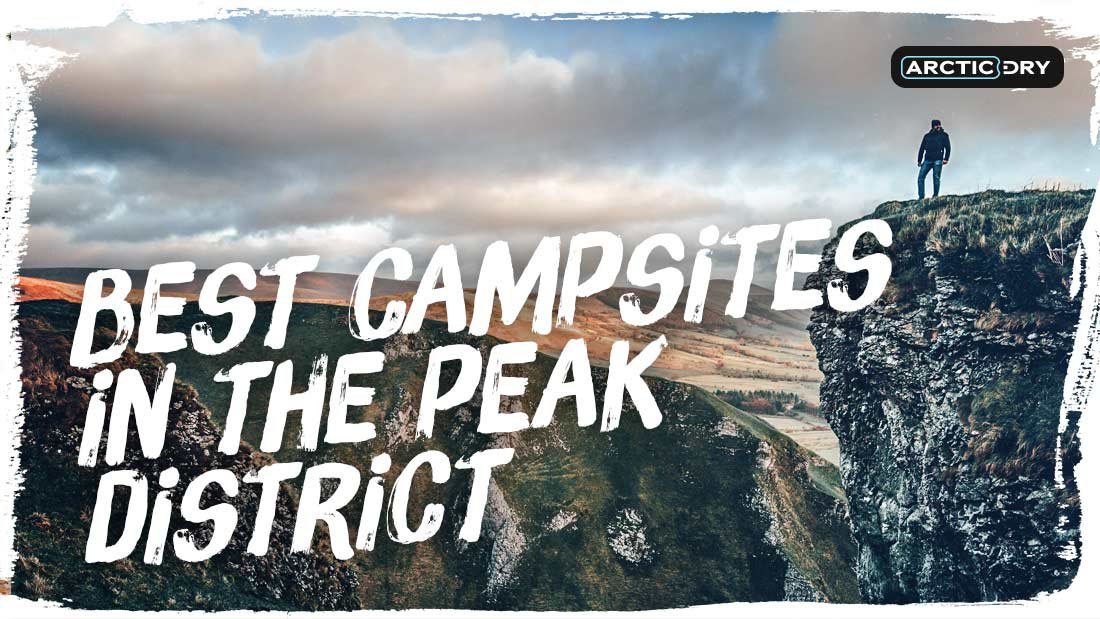Wild Camping in the Peak District: Full Guide

Contents
Wild camping in the UK is getting getting more popular by the day! The number of people dropping traditional camping for this new trend is on the increase, and for a good reason.
Roaming and exploring the wild on your own with no camping caravans in sight sounds a lot more exciting than having to share campsites with tens of other adventurers. While wild camping is forbidden in most parts of the UK, one of the few places you CAN go wild camping is the Peak District.
England’s most historic national park’s hills and valleys are the perfect escape for wild campers looking to experience nature in its rawest form.
The Peak District is a special place indeed, and this article will serve as a guide to Wild Camping in the Peak District, so if you’ve already prepared your wild camping kit & wild camping tent, then stay back for a second to read this guide before heading out.
History of the Peak District

Founded in 1951, the Peak District is England’s first national park. Its name comes from an Anglo-Saxon tribe known as Pecsaetan that once inhabited that part of England.
A bigger chunk of the park is situated in Derbyshire but it also stretches to Cheshire and Yorkshire. The highest peak in Peak District is Kinder Scout, and this stands at 636m. Overall, there’s plenty of countryside in the park that outdoor lovers can explore through hikes, walks, and camping adventures. However, the area also features a multitude of small towns and villages.
The Peak District is divided into two parts: The White Peak and the Dark Peak. The Dark Peak is highlighted by sweeping moorlands, as well as gritstone escarpments whereas the White Peak features more lively quaint villages with picturesque limestone dales.
Both Peaks offer great settings for a wild camping adventure with strategic spots to enjoy various outdoor activities and marvel at the diverse local wildlife.
Where Can I Wild Camp in the Peak District?

There are a couple of nice spots in the Peak District where you can pitch a tent and get up close and personal with nature. The White Peak section covers beautiful areas such as the Dovedale and Chee Dale for those who don’t want to stray too far away from civilisation.
These are located close to local villages and towns in the Peak District. The only problem is that they aren’t as discreet as what you think about when you hear the phrase “wild camping”?
The Dark Peak area comprises more remote locations like the Bleaklow, Kinder Scout, and open moorland. This is relatively remote and away from the local villages in the Peak District, making it a textbook setting for a wild camping escapade. Ideally, you should look for a spot in the higher areas for a more enjoyable experience. The Kinder plateau is particularly vast and the chances of bumping into someone are very slim.
This is unlike Bamford Edge, where you can find several nice spots but is generally prone to crowds. If you know anything about wild camping, then you will appreciate the aspect of privacy and solitude that it offers. Sharing a spot with someone, however gorgeous, can be a little off-turning.
How to find a Place to Wild Camp in the Peak District

If you’re venturing into the Peak District for the first, you might have a hard time finding the perfect camp spot, considering just how huge the national park is. However, these few tricks will help you get closer to that than you expected:
Look for Spots on Walks
The best thing you can do to find a wild camp spot in the Peak District is to go on a pre-visit, preferably a day walk. This gives you a chance to examine all the potential camp pitches before you can land on the ideal one for you. Try to look for sheltered areas with gorgeous views to make the most of your adventure.
Check for a Spot on a Map
Alternatively, you can spare yourself the trouble of visiting the site and use a map to find a campsite. By studying the Peak District map, you’ll access all the details of the park and use this information to choose a suitable spot. Remember to pay attention to the contour lines when looking for a relatively flat area. Typically, the closer together the lines are on the map, the steeper the area and vice versa.
Consult Social Media
Most people tend to hold their cards close to the chest when it comes to finding the ideal wild camp locations. However, YouTubers seem to go against the grain. They happily share their outdoor adventures, including the locations they enjoyed the most. You can take advantage of these YouTube videos and use them as a guide in your search for a wild camp spot. Just log into the site and search “wild camps in the Peak District”; you’ll be amazed by what pops up!
Keep Your Spot to Yourself
Once you find a spot that you love, remember not to divulge this information to everyone who crosses your path. The issue with popular wild camping spots is that they suffer continued damage, especially the vegetation. The only way to reduce this is to ensure that as few people as possible get to learn of it. Furthermore, it’s always satisfying to discover the ideal camp spot on your own. Finally, remember to start your search early so that it doesn’t get dark before you find one.
What are the Best Campsites in the Peak District?

If you haven’t found an appealing spot already, several Peak District wild camping sites should interest you. Be sure to check out the following when you go to explore the area:
Upper Hurt Farm, Hartington
This eco-friendly farm serves as an attractive campsite with panoramic 360-degree views of the Manifold Valley. It is located near the Village of Hartington and provides visitors with camping, picnicking, glamping, and caravanning opportunities.
The glamping yurts have hedgerows and trees surrounding them while scenic views of the undulating Peak District hills make for an excellent setting. Close to the Hartington campsite is the Beresford Dale, which offers amenities such as underground floor heating and shower blocks to everyone.
North Lees Campsite, Stanage Edge
A little over a mile from Hathersage, you’ll come across the North Lees campsite. This is an ideal option for campers looking for a quiet and solitary spot. It is better suited for small tents and the ground can be a little bit uneven. If you’re searching for a caravan-style campsite where the ground is level, this may not be the place for you.
Facilities offered include things such as toilets and showers; nothing fancy. However, the site provides visitors with world-class climbing and bouldering and will be the perfect place for hikers and cyclists.
Hayfield Camping Club Site
Found in the Dark Peak of the Peak District, this is the starting point for the park’s most attractive walks and demanding climbs. It is also just a short distance from the Village of Hayfield, allowing you to get a taste of civilisation whenever you feel homesick. From the site, you can scale the Lantern Pike to revel in the picturesque views of the seven counties or even find your way to Kinder Scout. Facilities provide on-site include a kid’s play area, washroom, as well as a small shop.
Callow Top Holiday Park, Ashbourne
Callow Top is a world-class site that will be perfect for campers, caravanners, as well as self-catering vacationists. It is conveniently situated near the Dovedale Stepping Stones and features heated outdoor swimming and paddling pools. This will also be a nice option for bike enthusiasts, with the opportunity to hire a bike in Tissington. Meanwhile, bird watchers and nature viewers can make the most of the fishing lake to get a glimpse of the diverse bird species around.
Can I Hike and Cycle in the Peak District?
The Peak District is a national park buzzing with all sorts of entertainment outdoor offerings. Whether you’re a camper, hiker, or cyclist, there is enough fun to go around. Boasting ancient stone villages, woodlands, reservoirs, and rugged moorlands, here are some of the best cycling and hiking routes you can explore:
Cycle Routes
Northern Peaks Loop
This cycle path spans about 128km, starting from Bakewell and ending at the same spot. It will take you through the Ladybower Reservoir and Strines Moor before ascending to the Holme Moss and Glossop. From here, you can make your way back to the starting point.
For this type of route you could use a good gravel bike, a Ribble Road Bike or if you’re feeling a bit lazy, an electric bike.
Central Peaks Loop
This 84-kilometre stretch of bike route begins at the Chartworth House grounds and elevates to the Beeley Moor and Village of Froggat. From here, it meanders to the Hope Valley before climbing to the Winnats Pass and finally descending back to Chatsworth.
Southern Peaks Loop
The other route you can cycle on is the Southern Peaks loop. This stretches about 62km, starting and ending at the Family Tree Café in Whatstandwell. It is a nice choice for cyclists looking for a challenging course and features a total of ten hills to test your grit.
Hiking Routes
The Limestone Way
If you want to exercise your legs, this 45-mile stretch of road begins at Castleton, rolling through Derbyshire Dales before ending on Rocester. It is generally an easy trail that won’t wear you down, passing through farmlands with a few hills on the way.
Kinder Scout
Kinder Scout is the highest point in Peak District. It features a route with panoramic views of the park where you can enjoy a fun hike with friends. You’ll marvel at the Mermaid’s Pool and interesting rock features like the Pym’s Chair and Boxing Gloves. The journey starts in Edale and makes its way up the scenic Jacob’s Ladder path before going back towards the Kinder Downfall, the tallest waterfall in the park.
Mam’Tor
Mam’Tor, which means Mother Hill is a panoramic hill near Castleton that rises to a 517m height. It is world-renowned for its views over Winnats Pass. The ridge walk links the Great Ridge to the Rushop Edge. It is also home to multiple caverns such as the Peak Cavern (the devil’s arse) and Speedwell. Mam’Tor is sometimes referred to as the Shivering Mountain because its gritstone and shale layers are prone to landslips.
First Time in the Peak District?
If it’s your first time in the Peak District, a little bit of wild camping etiquette will go a long way to ensure the park’s beauty is conserved. So, be sure to do the following when you decide to go wild camping in the park:
For instance, it’s always good to respect the calmness and silence of the outdoors. You shouldn’t do anything that will affect this, including playing loud music or simply shouting carelessly. You don’t want to be a nuisance to the wildlife walking around; try to enjoy the peace that you found.
Meanwhile, some of the remote areas in Peak District that you’ll be wild camping in have zero phone signal. So, if you’re planning to use a phone during your stay in the outdoors, it would be wise to check the nature of the signal before settling on a camping spot.
Conclusion
If you are a nature lover residing in the UK, this might just be the perfect opportunity to visit the beautiful national park that is Peak District. It offers a wide variety of fun activities that you can engage in, especially for wild campers. The guide above tells you all you need to know about Peak District wild camping.
FAQ
What is the number 1 rule of wild camping?
The first rule of wild camping is to leave no traces. Ensure the place is the same way you found it before leaving your camping spot. This means any food remains and other rubbish that you might have thrown on the ground should be picked up and kept in a bag for disposal in the appropriate place. Before you leave in the morning, ensure everything is as pristine as you found it.
Where Can I Go to the Bathroom During Wild Camping?
For a rookie wild camper, it can be very confusing when nature calls. Ideally, you should find an area away from any water sources around to do your business. Typically, dig a hole with a shovel, where you are going to leave your mark before covering it nicely. If you use a tissue, make sure you carry it away in a rubbish bag.
Is Wild Camping Legal in the UK?
Technically, wild camping is not legal in England, Wales, and Northern Ireland; it’s only Scotland that allows wild camping. However, there are certain areas in England, such as Peak District where wild camping is tolerated as long as you get permission from the property’s owner.








